|
|

|

|

|
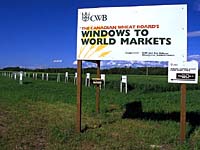
The Canadian Wheat Board's windows to world markets for
Saskatchewan agriculture. These signs appeared on field trials - field co-operators: Cliff and Bev Dobson of Moosomin.
|
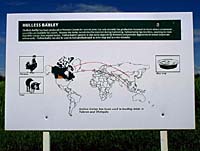
Hulless barley has been produced in Western Canada for several years, but only recently has production increased to levels where commercial export quantities are available for export. Because the barley kernel's hull is removed during harvesting, hulless barley has less fibre, resulting in more digestible energy than regular barley. Hulless barley's protein is also easily digestible by livestock and provides high levels of several important amino acids. Hulless barley can also be used in food production such as miso soup and as a rice extender. Hulless barley has been used in feeding trials in Taiwan and Malaysia.
|

Feed barley is an economical feed ingredient recognized in export markets for its contribution to hard, white fat in livestock. Many export markets prefer meat with hard, white fat over the soft yellow fat produced in corn-fed livestock. Of the barley sown in Western Canada, only 30 percent is sown to varieties specifically used for livestock feed. The rest is sown to malting barley varieties. Some markets for feed barley are Japan, U.S.A. and Saudi Arabia.
|
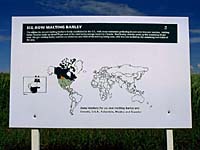
The market for six-row malting barley is firmly established in the U.S., with many customers preferring six-row over two-row varieties. Malting barley varieties make up 70 percent of the total barley acreage seeded in Canada. Feed barley varieties make up the remaining 30 percent. Six-row malting barley varieties are seeded on one-third of the malting barley area, with two-row seeded on the remaining two-thirds of the area. Some markets for six-row malting barley include: U.S.A., Columbia, Mexico and Ecuador.
|

Two-row malting barley varieties grown in Western Canada have demonstrated superior malting and brewing qualities. Two-row varieties are known for their high extract levels. Some markets for two-row malting varieties are: China, U.S.A., Japan, South Korea, Brazil, South Africa and Mexico.
|
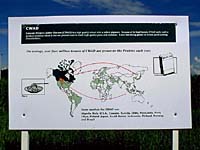
Canada Western Amber Durum (CWAD) is a high quality wheat with a yellow pigment. Because of its hard kernel, CWAD mills well to produce semolina which is the raw product used to make high quality pasta and couscous. It also has strong gluten to ensure good cooking characteristics. On average, over four million tonnes of CWAD are grown on the prairies each year. Some markets for CWAD are: Algeria, Italy, U.S.A., Tunisia, Chile, Venezuela, Peru, Libya, Poland, Japan, South Korea, Indonesia, Finland, Norway and Brazil.
|
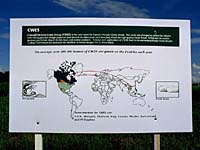
Canada Western Extra Strong (CWES) is the new name for Canada Western Utility wheat. The name was changed to reflect the wheat's extra strong physical dough properties and identify its value as an ideal blending wheat for high-quality bread flours. CWES can be used to produce pan breads, health breads, buns and similar products. A major new application of CWES flour is for commercial frozen bread doughs. Adding CWES flours has increased the shelf-life of frozen dough two to three times. On average, over 300,000 tonnes of CWES are grown on the prairies each year. Some markets for CWES are: U.S.A., Malaysia, Thailand, Mexico, Switzerland, and the Philippines.
|
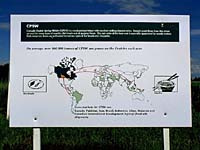
Canada Prairie Spring White (CPSW) is a medium-hard wheat with excellent milling characteristics. Straight grade flours from this wheat are used for many types of noodles, flat breads and all purpose flours. The pale color of the bran coat is especially appreciated by noodle makers. High extraction flours are well suited for various types of flat breads and chappattis. On average over 500,000 tonnes of CPSW are grown on the prairies each year. Some markets for CPSW are: Pakistan, Iran, Brazil, Indonesia, Libya, Malaysia, and Canadian International Development Agency (food aid) shipments.
|
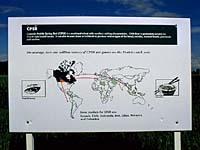
Canada Prairie Spring Red (CPSR) is a semi-hard wheat with excellent milling characteristics. CPSR flour is particularly suitable for French-style hearth breads. It can also be used alone or in blends to produce various types of flat bread, noodles, steamed breads, pan breads and crackers. On average over one million tonnes of CPSR are grown on the prairies each year. Some markets for CPSR include: Chile, Indonesia, Iran, Libya, Malaysia, and Columbia.
|
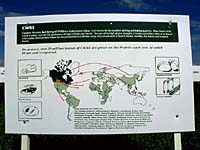
Canadian Western Red Spring (CWRS) is a high-protein wheat, well known for its excellent milling and baking qualities. Flour from CWRS wheat is widely used for production of high-quality pan breads. Because of its high gluten strength, it is also used either alone or in blends with weaker, lower protein wheat for the production of a diverse range of products such as hearth breads, noodles, flat breads and steamed breads. On average, over 20 million tonnes of CWRS are grown on the prairies each year, of which 80 percent is exported. Some markets for CWRS are: Belgium, Luxembourg, Greece, Italy, Netherlands, Portugal, Spain, United Kingdom, Finland, Iceland, Norway, Switzerland, Azerbaijan, Bulgaria, Czechoslovakia, Germany, Poland, South Africa, Sudan, Tanzania, Uganda, West Africa, Zaire, Zambia, Zimbabwe, China, Cyprus, Hong Kong, Indonesia, Iran, Isreal, Japan, Jordan, Korea, Kuwait, Malaysia, Philippines, Singapore, Taiwan, Thailand, Vietnam, Yemen, New Zealand, Brazil, Chile, Columbia, Costa Rica, Cuba, Dominican Republic, El Salvador, Guatemala, Honduras, Jamaica, Mexico, Peru, U.S.A., Uruguay, Venezuela, and Canadian International Development Agency (food aid) shipments.
|
|
|
|
